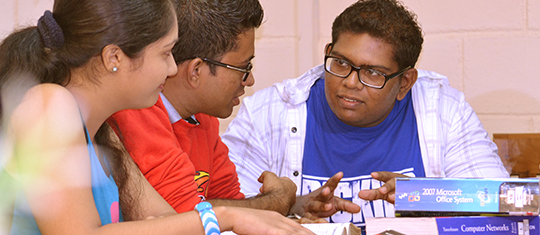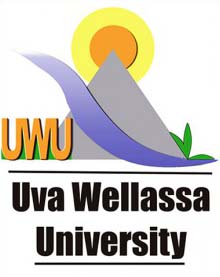Submission of Research Paper /Articles
Manuscripts should follow the formatting guidelines of the Journal of Management and Tourism Research. Authors are advised to follow the specific template paper when submitting their manuscripts. The submitted paper will be reviewed by the editorial committee and a decision will be communicated to the author about further proceedings. Authors are expected strictly to maintain the 8000-word limit. No article should exceed more than 5 to 10 pages.
Authors are kindly requested to submit full text papers including results, tables, figures and references.
Authors can submit their manuscript by an e-mail to jmtr@uwu.ac.lk
Submission Preparation Checklist
As part of the submission process, authors are required to check off their submission’s compliance with all the author guidelines, and submissions may be returned to authors that do not adhere to these guidelines.
The article has been proofread and corrected for errors.
Preparation of Full Paper
The articles that do not meet the standards will be forwarded to authors for the future improvements.
Full Paper Structure
Each article requested to follow following order
- Title page with author/s , affiliation/s and ORCID/s
- Abstract and Keywords
- Main text
- References
Format for Typesetting
Manuscripts must be typewritten single line spacing using MS word. Each page must be numbered
- Paper size: B5 (176 x 250 mm) typed single side only
- Margins: Top, bottom, left and right margins of 25 mm
- Line spacing: Single (1.0)
- Page and line numbering: All pages should be sequentially numbered starting from the abstract page using Arabic numbers.
- Font and font size: Times New Roman, size 10
- For main heading or title: 14 point, bold
- For Subtitle: 12 points and bold
- Word Limit: 8000 words
Essential Title Page Information
Author Names, Affiliations and ORCIDs – Author asked to clearly indicate the name(s) of each author, present the authors’ affiliation addresses (where the actual work was done) and ORCIDs.
For All Authors: Use lower case. Bold the author names. Do not bold the other information.
First Author’s Full Name (Do not abbreviate the primary given name and surname/family name;
Middle names may be abbreviated; Underline author’s family name)
Position
Department and Work Place (e.g., university or agency name)
City, Province/State, Country (of your work place)
Email address
ORCID
Second Author’s Full Name (do not abbreviate first and last names; Underline author’s family name)
Position
Department and Work Place (e.g., university or agency name)
City, Province/State, Country (of your work place)
Email address
ORCID
Third, Fourth, Fifth, and other Author’s Full Name (do not abbreviate first and last names; Underline author’s family name)
(same information as above)
Abstract and Keywords
The article should be submitted with an abstract which is not more than 250 words exactly conveying the purpose of the research, methods, the principal results, and major conclusions. Immediate after the abstract 3 to 6 Keywords should be included.
Main content text
Main content text with all tables and figures aligned in their location (do not send tables and figures separately unless requested), list of symbols and abbreviations, acknowledgement, references (follow standard format).
Tables
All tables should be numbered in order, the word Table may be bolded. The table number should be properly given, large size tables should be split into two or more tables so that it can be accommodated within the page size. Table width and cell sizing should be even and all the content should be centered. Number of the tables should be given over the tables and without any border, shading.
Figures
All figure number should be arranged orderly, the figures should not be supplied separately but pasted in the proper place. Figure number and title should be given below the figure, the content of the figure should be explained in the title of figure.
Do not give the figures and tables in the last page, provide them wherever necessary in the article. Provide the figure name and number below the figure and also do not form the images in two columns.
Acknowledgements
Bring together acknowledgements for required individuals, organizations and institutes in a separate section at the end of the article before the references.
References (APA 6th)
- All references must be arranged first alphabetically.
- References should be the last part of the article following the below given format:
- Prakash.R., and Ramesh G.R, 2008, Article title, Journal of American Society of Civil Engineers, 23(2),pp 12-15.
- Prajesh G.,2004, Article title, Journal of Applied Engineering, 45(2), pp 13-17.
- Books: P.K.Gupta., (2006). Introduction to Operations Research, 3rd. Ed. McGraw Hill Inc, 34-96.
- Book Chapter : Botkin,J (2006). What do you meant by Ecosystem in : Environmental Science of Living Plater, 3rd edition, E-age Publishing, New York.
- Conferences : Ganeshkumar.B, “Geospatial technology for disaster management”, International Conference on Disaster Mitigation and Management, PSNA College of Engineering and Technology, Dindigul, pp 234-238.
- Web Pages : Ramesh J (2007) How to draw in Computers. IOP Publishing PhysicsWeb. http://company.org/articles/news/11/6/16/2. Accessed 26 June 2010.
- Reference citation
- Please ensure that every reference cited in the text is also present in the reference list
- Single author : the author’s name (without initials) and the year of publication:
- Two authors : Both authors name and also the year of publication of the article.
- Three or more than three authors : First author’s name followed by “et al.”. Example : Baskaran, 1998: Crish Rabia and John Pedikri, 2008: Podilinski et al., 2004. Citing web reference can be like the journal article reference.
Responsibilities of the Authors
Corresponding Author should ensure that all those who have contributed significantly cited as co-authors. Other personalities who have contributed to the study in a minor capacity should be acknowledged, but not cited as authors. An author is someone who has made a significant scholarly contribution to the article, this can include but is not limited to:
- Background theory
- Design of experiment
- Device prototype
- Data analysis and interpretation
- Writing of the article or reviewing and/or revising the text and/or figures
It is the corresponding author’s responsibility to ensure that all named authors have approved the submitted version of the article, and all further revisions, agree to its submission and are willing to take appropriate responsibility for it.
It is important that all authors have approved the final version of the article as accepted for publication.
It is the corresponding author’s responsibility to ensure the paper is not under consideration by any other journal at the time of submission.


